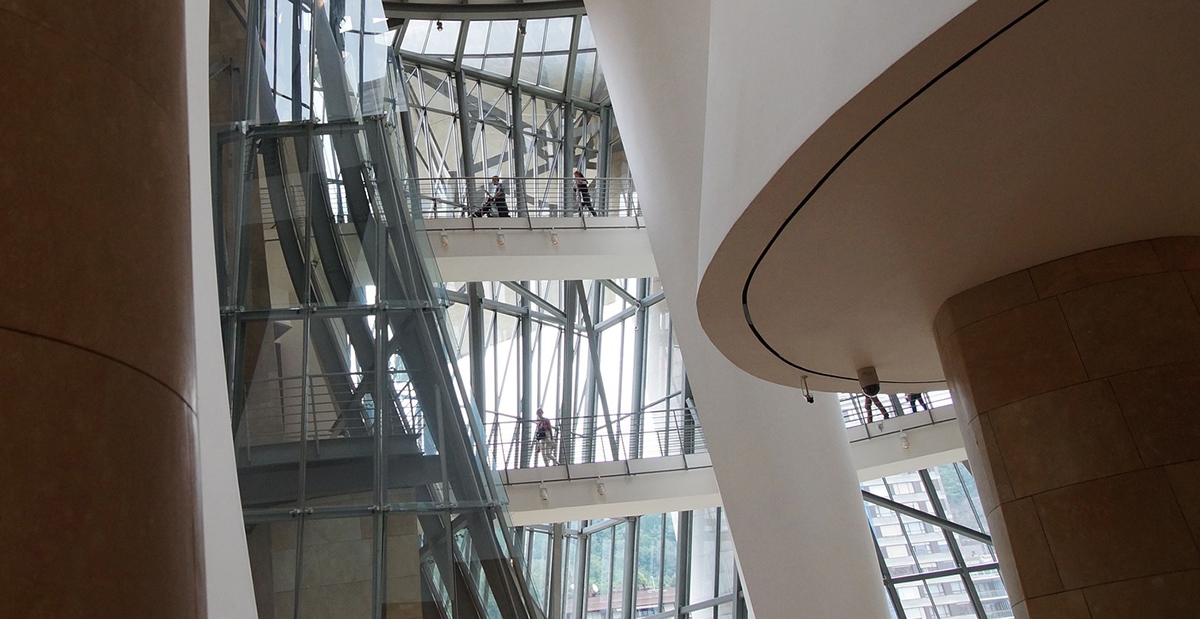
When excavations in Iraq in the 20s and 30s uncovered the palace and temple complex of Ur, the implications for museums around the world were incredible. This was not only due to a wealth of objects which would influence museums for decades to come, so much as the potential discovery of the world’s first museum.
Now named in honour of its initial curator, the Neo-Babylonian princess Ennigaldi, this 2,500-year-old museum housed objects ranging hundreds of years in age. Each object was accompanied by clay cylinders inscribed in multiple languages which are now believed by some to be the earliest evidence of museums labels.
While past museums may have been the reserve of the wealthy elite, most museums today are intended for the public. The bold claim of “the first public museum” goes to the Ashmolean Museum, established in the 17th century in Oxford, England. Elias Ashmole, the museum’s founder stated that a knowledge of the natural world and the wonders within it are “very necessary to human life”.
As such, how do we ensure that museums, their history, art, and their culture are accessible to all of the public and not just a privileged few? This issue has troubled museologists for decades with UNESDOC describing the risk that disabled individuals “may find themselves under sentence of exclusion from society.” in not being able to attend venues, events, festivals and much more in the same way as the majority of society does.
What makes a museum accessible?
One of the first words I search for on museum websites when planning a visit is “Accessibility”. Sometimes I find very little and this makes me think, “ah, I’m not welcome there” or, should I choose to go anyway, I’ll have to adopt the dreaded mantra “This is fine.” However, is “fine” ever truly good enough when we’re investing in our culture, our heritage, art and history? Then, there are other times when I’m amazed at the effort that goes into presenting accessibility, not just as some kind of elusive bonus to be dredged up from the depths of the museum’s website, but as an integral part of a museum’s values.
Accessibility the collective term used to describe the methods which make venues, products, services and so much more, available to everyone. For a place to be considered accessible from a mobility perspective, there will be considerations such as it needing to be navigable by individuals who may not be able to walk. They may have crutches to assist them or perhaps they use a wheelchair. For a museum, the challenge is that they are trying to cater to the entire public, the diversity and needs of which are vast. Accessibility covers a vast array of features and services which make areas more easily navigable by all people of all abilities or disabilities. Some examples of types of disabilities museums would have to cater to in attempting to be more accessible with examples:
Visual disabilities – Can the museum be navigated using a Guide Dog or a cane? Are signposts and labels available in Braille?
Physical disabilities – Do individuals using crutches or walking frames have sufficient space to navigate exhibitions?
Auditory disabilities – Are loop induction systems in place at help desks so that individuals with hearing aids can understand staff?
Cognitive disabilities – Are video and audio elements of exhibitions of a standard that will not exacerbate conditions such as epilepsy or vestibular disorder?
Speech disabilities – Are museum staff appropriately trained to assist individuals who may have difficulty communicating verbally?
This is a very simplified take on what accessibility means in a museological setting. There are many more considerations to take into account. Luckily, there are already many museums across the globe which have made accessibility a vital and valued part not just of their day to day running of the museum but of their very infrastructure. But, in which ways can a museum be accessible?
Tactile Galleries
In the past, there has always been the issue of distance between museum items, pieces and objects and how the public perceives them. The preservation of historical art is of utmost importance and the idea of letting museum visitors touch them would irk any museologist. With this in mind, it is easy to understand why distance, and even sometimes protective barriers, are key aspects of ensuring that objects on display can remain safe and be enjoyed for years to come. So how do we make the inaccessibility of art more accessible? Some museums such as the Louvre, have introduced Tactile Galleries. Tactile galleries are areas of museums where visitors are actively encouraged to touch sculptures. This experience for Blind and Visually Impaired individuals is vital in ensuring art is available, without exception, to the wider public. Tactile Galleries are just one approach employed by museums to ensure that all people, regardless of ability can enjoy the art and history of the Louvre. As far as inclusion and interaction go, tactile galleries are also wonderful ways for the public to “meet” the art they know and love and are surprisingly entertaining for visitors of all abilities.
The world’s most accessible museum
The ongoing commitment of the Wellcome Collection in London has given it the reputation of being one of the most accessible museums in the world. The Wellcome Collection offers all of the usual accessibility services and features most of us have come to expect from museums but with a few surprising additions. While most of us think first and foremost of wheelchair and mobility scooter access when we hear “accessibility” it’s often the case that other sensory limitations can become somewhat forgotten. For example, Deaf and Hard of Hearing individuals will often find their own ways to cope and explore when they visit new places and are left, quite literally, to their own devices such as hearing aids if they use them. Audiological limitations are well catered to at the Wellcome Collection where fixed induction loops can be found and experienced at several points in the museum. The museum offers portable induction loops to those who book them ahead of time. There are also options to have tours in BSL (British Sign Language) or with Voice-To-Text technology allowing Deaf and Hard of Hearing visitors to fully immerse themselves in the exhibitions. This integration of technology and human compassion into historical sites such as museums makes them much more accessible.
Digital accesibility
Looking forward, to well established and well-loved museums across the globe, the idea of retrofitting clunky or unaesthetic accessibility features to beautiful infrastructures may raise a few hackles. While we all know and accept that wheelchair ramps are needed we’re also often faced with clunky ad hoc solutions to architectural barriers such as steps. This does not always need to be the case. The Guggenheim Museum Bilbao is an instantly recognisable architectural icon but what you may not realise about the Guggenheim is that it is also one of the most accessible museums. Every level, every cafe and restaurant, every restroom and exhibition is wheelchair accessible with loop induction systems for the Hard of Hearing in multiple locations. Adding to the architectural accessibility of the Guggenheim there is the digital accessibility. Visitors to the museum can download the audioguide directly to their smartphones before their visit making the Guggenheim possible to visit entirely independently and without staff assistance (Unless of course, you want staff assistance, they’re on hand should you need them). This freedom for many disabled individuals was nearly unimaginable not very long ago. As far as architecture goes you can’t find much more striking examples than Gehry’s masterpiece in Bilbao and the seamlessly integrated accessibility features throughout only go to show, accessibility can be beautiful.
The future of accessibility in culture, history and museology
Communication is key to understanding the requirements of any audience. Accessibility is not an exception to this rule. If all museums listened to their visitors the way some forerunners have, history, culture, art and so much more would be more available to the public than ever before.
When architecture and physical space are designed for all conceivable needs and abilities of the public, we see museums and their visitors flourish. Museums which offer multiple methods of interaction and interpretation allow the public to experience history, art, culture and most importantly, inclusion in fantastic new ways.
Innovative and inclusive design at an architectural and exhibition level can often fly under the radar of those who do not directly benefit from them but for these and so many other museums around the world, their museums are truly for everyone.





There are no comments yet